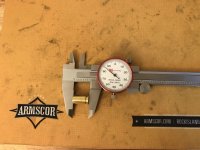Came across a possible deal that comes with a caveat.
https://www.evergladesammo.com/brass/40-cal-new-primed-brass-clearance-1000ct.html
The brass is new, the primers are installed, the primers may be 90% effective. With a primer there's no way to know which may be defective. Everglades claims their testing showed about 10% failed to ignite.
For someone looking desperately for both primers and new brass for plinking/load development (like me) these could be right up your ally. I was trying to pick up some once fired 40S&W brass when I encountered these. I've ordered 2000 of them If nothing else I got new brass at a reasonable cost.
https://www.evergladesammo.com/brass/40-cal-new-primed-brass-clearance-1000ct.html
The brass is new, the primers are installed, the primers may be 90% effective. With a primer there's no way to know which may be defective. Everglades claims their testing showed about 10% failed to ignite.
For someone looking desperately for both primers and new brass for plinking/load development (like me) these could be right up your ally. I was trying to pick up some once fired 40S&W brass when I encountered these. I've ordered 2000 of them If nothing else I got new brass at a reasonable cost.

